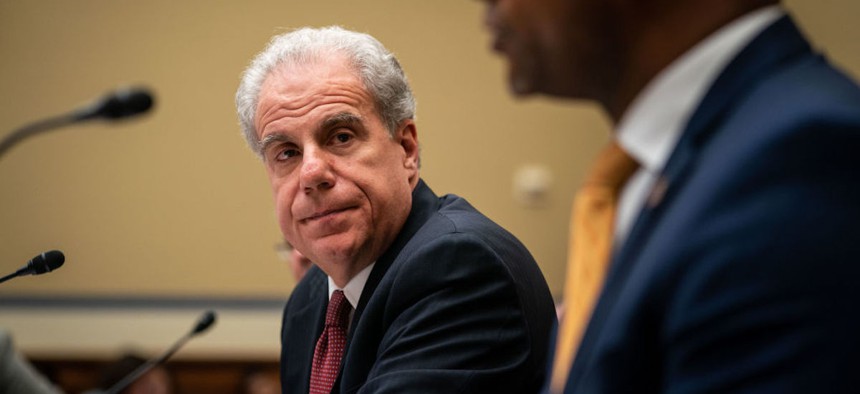Pandemic spending exposes weaknesses in how governments handle data

Michael Horowitz, chair of the Pandemic Response Accountability Committee, testifies during a House Oversight and Reform committee hearing to discuss COVID Pandemic Federal Spending on Feb. 1, 2023, in Washington, DC. Kent Nishimura / Los Angeles Times via Getty Images
A federal report found huge differences in how states and localities collected and shared data. Better collaboration could help prevent money going unaccounted for.
Springfield, Massachusetts, received more than $1.8 billion in pandemic relief money from 10 federal agencies. The city spent the funds providing a variety of services, but how much it spent on those services is sometimes a little hard to determine.
That’s because keeping track of how that money was spent is extremely difficult due in part to the problems that state and local agencies have in collecting and analyzing data, as well as the technological limitations associated with their databases, according to a report by the federal Pandemic Response Accountability Committee.
Making things particularly complex is the “dizzying array of recipients and programs and allocation mechanisms,” said Lisa Reijula, PRAC’s associate director of outreach and engagement.
The panel of inspectors general analyzed six randomly selected communities: two cities, two rural counties and two Tribal areas, which received approximately $2.65 billion in federal relief money during the COVID-19 pandemic.
They noted that keeping track of money flows got especially complex when state governments disbursed federal grants to subrecipients, like local governments or small businesses, as those subrecipients are not required to report their activity to the federal government.
“There's a lot we do know,” Reijula said, “but there's quite a bit that we don't.”
When the group drilled down into databases kept by federal, state and local agencies, it found a lot of inconsistencies and technological limitations. That included databases that, according to the report, “did not capture payments from recipients to individuals; could not generate reports as of a specified date requested by an [Office of Inspector General]; did not include data fields to allow for coding recipients as receiving pandemic funds; or that contained duplicates due to data entry errors.”
Reijula said these are all long-standing issues when it comes to the interaction of data between the various levels of government, “but the scale and the scope of the pandemic funding really exacerbated it and made the consequences more urgent.”
One example PRAC found of the poor interoperability between state, local and federal data was the absence of a system to keep track of how local housing agencies spent funds from the Tenant-Based Rental Assistance Program. As a result, the total spend for the initiative was listed as “Unknown” by the U.S. Department of Housing and Urban Development’s Office of the Inspector General.
State and local leaders have themselves acknowledged the difficulty of collecting, sharing and analyzing data, even among their own agencies. Maryland Chief Data Officer Pat McLoughlin said during a panel discussion earlier this year that there is a lot of “fear” surrounding the use and sharing of data.
Reijula said she hopes that the PRAC findings, as well as other reports to follow later this year, help encourage greater collaboration between all three levels of government. PRAC will especially look to state-level auditors for help, as “they have a much closer view” of “how things are unfolding on the ground, how money is being spent, what are the challenges that they're running into in trying to get relief funding out,” she said.
PRAC is also holding various meetings and working groups where state officials can share the lessons they have learned from the experience and impart best practices to their counterparts. The group has a state auditor-in-residence program to allow state and local leaders to further share ideas and experiences with others. “Hopefully,” Reijula said, “everyone isn't reinventing the wheel.”






